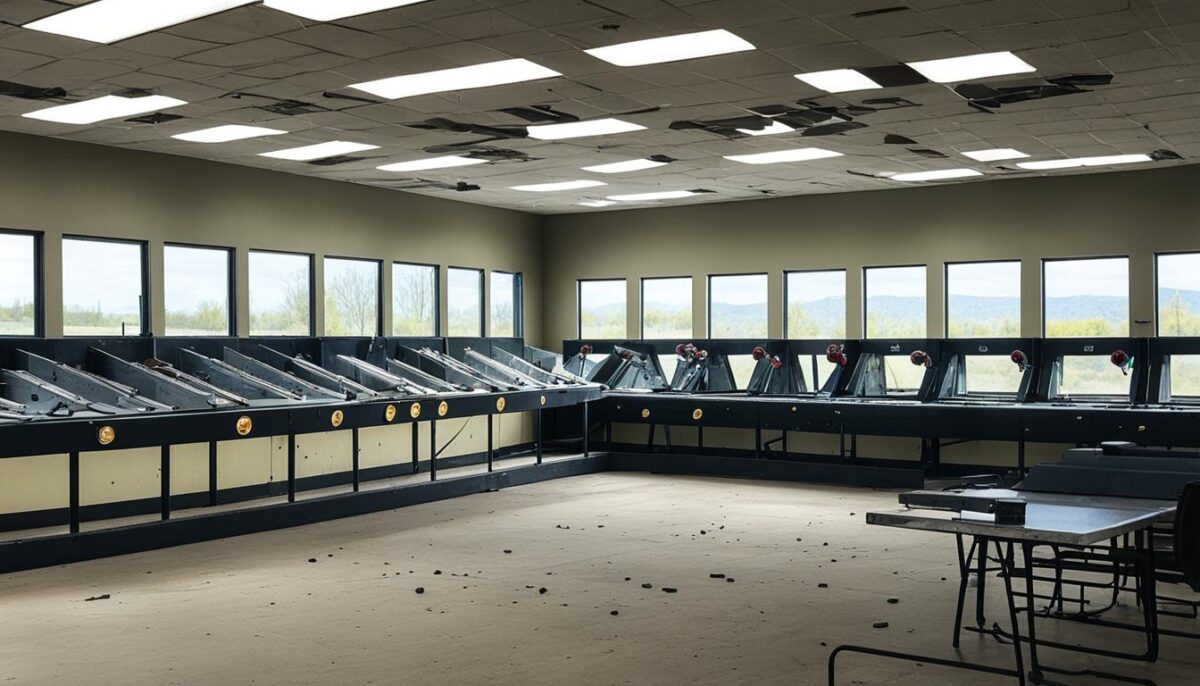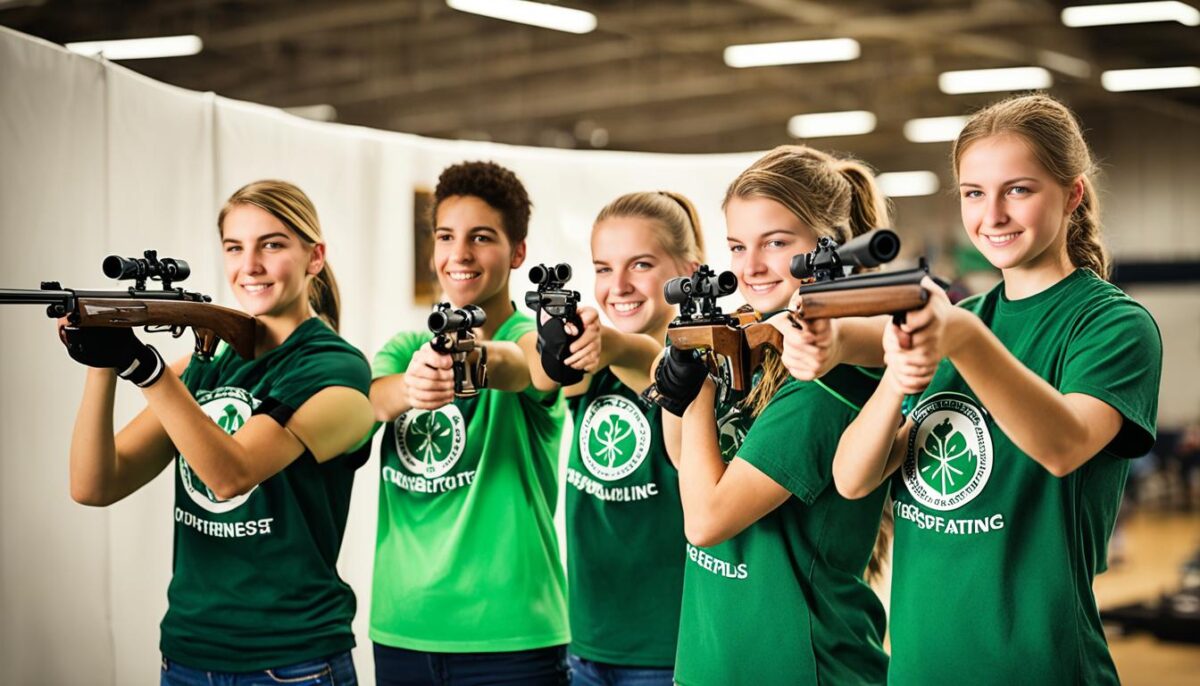Welcome to our blog post where we delve into the closure of On Target Shooting Sports, a beloved destination for target shooting enthusiasts. In this article, we will explore the reasons behind the closure and its implications for the target shooting community.
Unfortunately, after years of providing a welcoming space for shooting sports enthusiasts, On Target Shooting Sports closed its doors, leaving many wondering what led to this decision. The closure has left a void in the community and has raised questions about the future of target shooting sports.
Join us as we investigate the financial challenges that On Target Shooting Sports faced and the impact of declining participation in target shooting sports. We will also examine how this closure has affected the target shooting community. So, let’s dive in and uncover the reasons behind the closure of On Target Shooting Sports.
Financial Challenges Faced by On Target Shooting Sports
One of the primary factors that led to the closure of On Target Shooting Sports was the financial challenges the business encountered. Despite being a popular destination for target shooting enthusiasts, the company struggled to overcome various obstacles that ultimately became insurmountable.
The closure of On Target Shooting Sports can be attributed to several key financial difficulties:
- Declining Revenue: Over time, the shooting range experienced a decline in revenue, which significantly impacted its financial stability. Factors such as changing market preferences, increasing competition, and a decrease in the number of visitors all contributed to this downward trend.
- Rising Operational Costs: The costs associated with operating a shooting range, including maintenance, utilities, insurance, and staff salaries, continued to rise. Unfortunately, the revenue generated by On Target Shooting Sports was unable to keep pace with these increasing expenses, placing a strain on the business’s financial resources.
- Impact of Economic Conditions: The overall economic climate also played a role in the challenges faced by On Target Shooting Sports. During periods of economic downturn or uncertainty, discretionary spending on activities like target shooting often decreases. Consequently, this had a direct impact on the revenue generated by the shooting range and exacerbated its financial struggles.
To illustrate the financial challenges faced by On Target Shooting Sports, consider the following table:
| Financial Challenges | Description |
|---|---|
| Declining Revenue | An overall decrease in customer visits and sales revenue due to various factors such as changing market preferences and increased competition. |
| Rising Operational Costs | The continuous increase in expenses related to maintenance, utilities, insurance, and staffing, outpacing the revenue generated by the business. |
| Impact of Economic Conditions | The effects of economic downturns or uncertainty on target shooting sports, leading to reduced consumer spending and lower revenue for the shooting range. |

Despite efforts to navigate these financial challenges, On Target Shooting Sports was unable to find a sustainable solution, ultimately resulting in its closure. The closure of this beloved shooting range has had a significant impact on the target shooting community, as we will explore in the next section.
Declining Participation in Target Shooting Sports
The target shooting community has experienced a concerning trend in recent years – declining participation. This decline in engagement has had a direct and adverse effect on the sustainability of establishments like On Target Shooting Sports. Understanding the reasons behind this decline is crucial in addressing the challenges faced by the target shooting community.
One significant factor contributing to the declining participation is changing demographics. As society evolves, the interests and hobbies of individuals also shift. With the emergence of new recreational activities and sports, target shooting has faced increased competition for participants, particularly among younger generations.
Another contributing factor is the shifting interests of individuals. As technology continues to advance and provide a plethora of entertainment options, traditional activities like target shooting can struggle to compete for attention. The allure of instant gratification through digital mediums and immersive virtual experiences has drawn the focus away from more traditional sports.
Lack of outreach efforts within the target shooting community has also played a role in the declining participation. Without proactive initiatives to attract and engage newcomers, the community may struggle to replenish its ranks. Comprehensive outreach programs targeting diverse demographics, such as women and young adults, can help bridge the gap and revitalize interest in target shooting sports.
“To combat declining participation, it’s essential for the target shooting community to adapt and evolve. This includes embracing new technologies, diversifying outreach efforts, and fostering a welcoming and inclusive environment for all.”
Efforts to reverse the declining participation require a holistic approach that addresses the multiple factors fueling this trend. By recognizing changing demographics, embracing new interests, and prioritizing inclusivity, the target shooting community can work towards revitalizing engagement and ensuring the sustainability of establishments like On Target Shooting Sports.
Demographic Comparison of Target Shooting Participants
| Demographic Category | 2015 | 2020 |
|---|---|---|
| Men | 75% | 68% |
| Women | 25% | 32% |
| Age Group: 18-34 | 35% | 26% |
| Age Group: 35-54 | 40% | 38% |
| Age Group: 55+ | 25% | 36% |
Impact on the Target Shooting Community
The closure of On Target Shooting Sports has had significant implications for the target shooting community. With the loss of this valuable shooting range, enthusiasts are left searching for alternative options to pursue their passion for target shooting.
Local competitions and events that were once hosted at On Target Shooting Sports may now face challenges or require relocation. This closure has disrupted the established routines and camaraderie within the target shooting community, as shooters seek out new venues to connect and compete.
Moreover, the closure of On Target Shooting Sports has highlighted the need for increased awareness and support for target shooting sports. It is crucial for organizations, clubs, and associations to come together to address the declining participation in the sport and ensure the availability of safe and accessible shooting facilities.
As the target shooting community grapples with the consequences of this closure, it becomes evident that collective efforts are necessary to foster the growth and sustainability of the sport. By encouraging new participants, advocating for shooting range preservation, and fostering a sense of community, we can mitigate the impact of closures like On Target Shooting Sports and ensure a vibrant future for target shooting sports.



